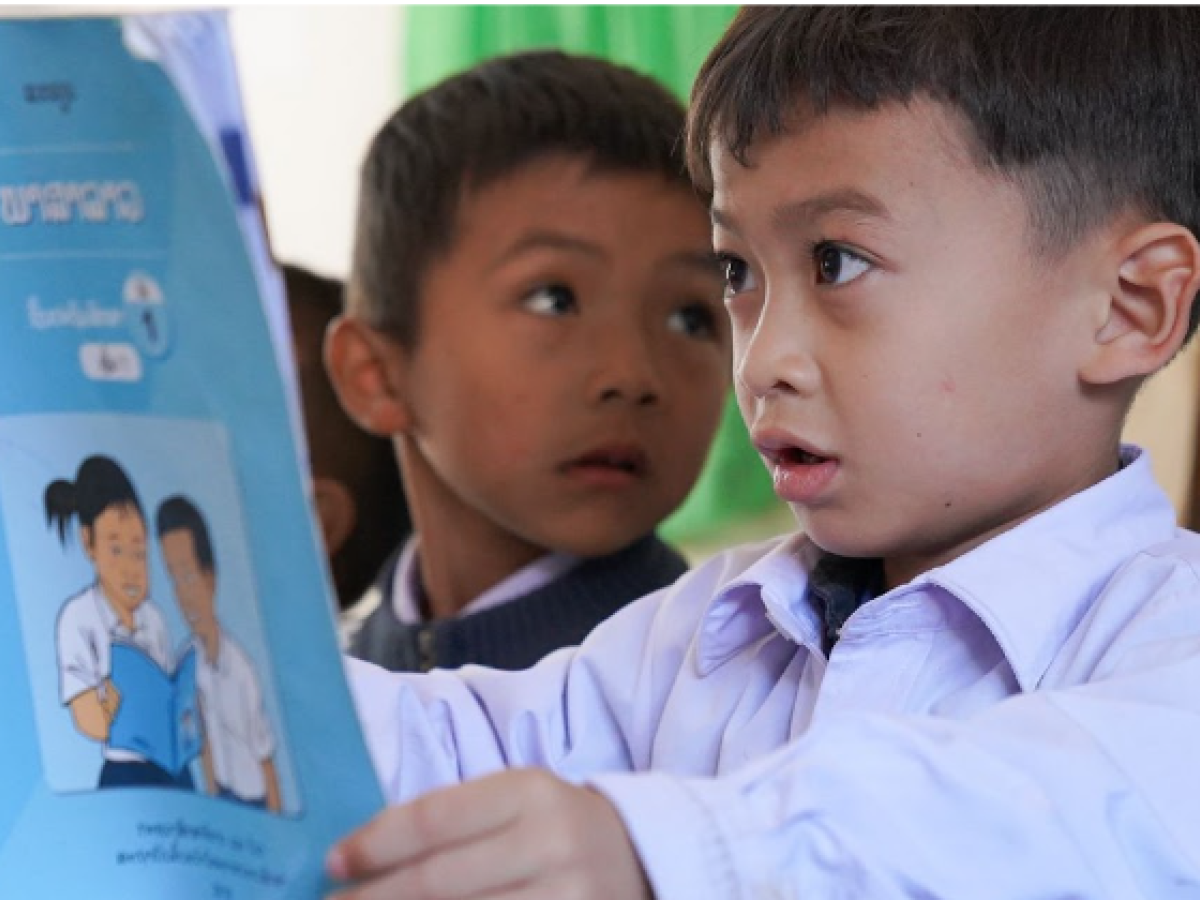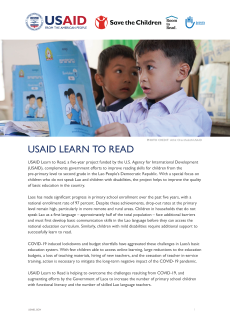USAID Learn to Read, a five-year project funded by the U.S. Agency for International Development (USAID), complements government efforts to improve reading skills for children from the pre-primary level to second grade in the Lao People’s Democratic Republic. With a special focus on children who do not speak Lao and children with disabilities, the project helps to improve the quality of basic education in the country.
Laos has made significant progress in primary school enrollment over the past five years, with a national enrollment rate of 97 percent. Despite these achievements, drop-out rates at the primary level remain high, particularly in more remote and rural areas. Children in households that do not speak Lao as a first language – approximately half of the total population – face additional barriers and must first develop basic communication skills in the Lao language before they can access the national education curriculum. Similarly, children with mild disabilities require additional support to successfully learn to read.
COVID-19 induced lockdowns and budget shortfalls have aggravated these challenges in Laos’s basic education system. With few children able to access online learning, large reductions to the education budgets, a loss of teaching materials, hiring of new teachers, and the cessation of teacher in-service training, action is necessary to mitigate the long-term negative impact of the COVID-19 pandemic.
USAID Learn to Read is helping to overcome the challenges resulting from COVID-19, and augmenting efforts by the Government of Laos to increase the number of primary school children with functional literacy and the number of skilled Lao language teachers.
IMPROVING READING OUTCOMES
USAID supports the development of evidence-based, supplemental reading materials. By tapping into expertise from across the education sector, USAID Learn to Read develops Lao literacy program packages for pre-primary and early primary classrooms with application of inclusive principles and pedagogy. Based on a collaborative approach and an understanding of the needs of disadvantaged students, these packages address gaps in the Lao language curricula and are supplemented by teaching and learning materials specifically designed to address the learning needs of non-Lao-speaking students and children with disabilities.
ENGAGING COMMUNITY TO CREATE A CONDUCIVE LEARNING ENVIRONMENT
USAID supports the development of literacy for children from pre-primary to second grade by strengthening the literacy environment at home through targeted engagement of community members. Activities include face-to-face home visits by volunteers and Village Education Development Committees, reading festivals and family literacy days at schools. USAID partners with the Ministry of Education and Sports, the Ministry of Information, Culture and Tourism, and local and international non-governmental organizations to determine effective strategies that enhance commitment to literacy and strengthen the home and community literacy environment.
KEY RESULTS
- In the 16 districts where Learn to Read is working, the project has provided 278,901 storybooks for children in 2,131 pre-primary, Grade 1 and Grade 2 classrooms in 849 schools. The project has trained more than 48% of target teachers, and 100% of school principals and government officials, who are now better-equipped with technical knowledge and experience.
- Engaging with parents and caregivers is essential to help non-Lao speaking children and children with disabilities to increase their reading comprehension. Learn to Read has engaged a total of 8,393 caregivers in reading corner orientation meetings; and provided a total 1,642 teacher coaching visits. This helps caregivers to understand and play a crucial role in helping their children succeed in schools and their futures.
- Despite COVID-19 restrictions, the project has organized 134 reading festivals, involving 8,122 students, resulting in a more conducive and interactive learning environment for children to become fluent readers. USAID Learn to Read augments efforts by the Government of Laos to increase the number of primary school children with functional literacy and the number of skilled Lao language teachers, while creating a culture and love for reading and learning that will ensure sustained interest in further education.
- USAID works to ensure that teaching and learning materials are inclusive for non-Lao speaking children and children with disabilities, underpinning USAID’s Diversity, Equity, Inclusion, and Accessibility strategy. Learn to Read materials are now widely reproduced by the Ministry of Education and Sports and other development partners and can be accessed online.


